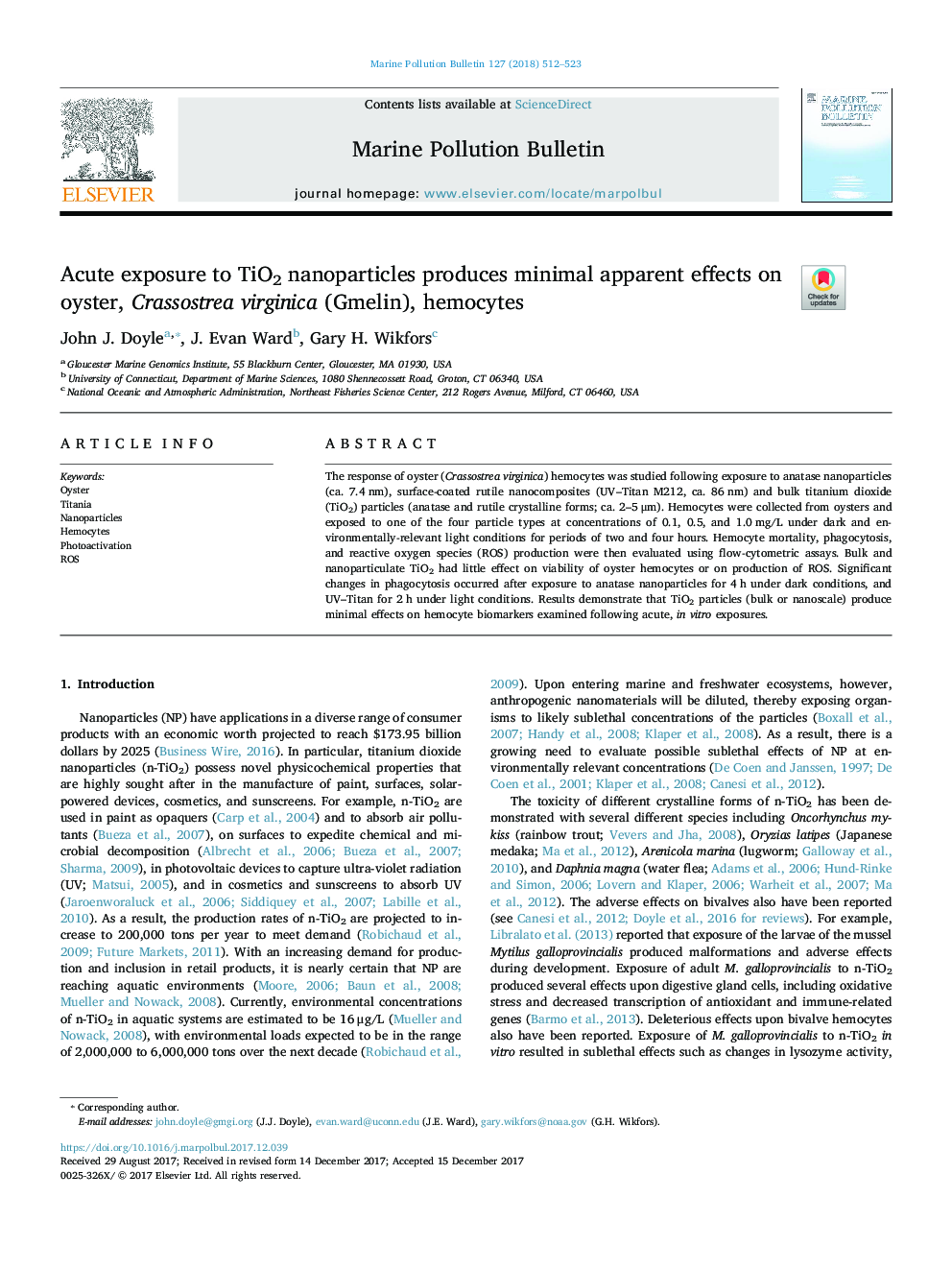| Article ID | Journal | Published Year | Pages | File Type |
|---|---|---|---|---|
| 8871693 | Marine Pollution Bulletin | 2018 | 12 Pages |
Abstract
The response of oyster (Crassostrea virginica) hemocytes was studied following exposure to anatase nanoparticles (ca. 7.4 nm), surface-coated rutile nanocomposites (UV-Titan M212, ca. 86 nm) and bulk titanium dioxide (TiO2) particles (anatase and rutile crystalline forms; 0.4-0.5 μm). Hemocytes were collected from oysters and exposed to one of the four particle types at concentrations of 0.1, 0.5, and 1.0 mg/L under dark and environmentally-relevant light conditions for periods of two and four hours. Hemocyte mortality, phagocytosis, and reactive oxygen species (ROS) production were then evaluated using flow-cytometric assays. Bulk and nanoparticulate TiO2 had little effect on viability of oyster hemocytes or on production of ROS. Significant changes in phagocytosis occurred after exposure to anatase nanoparticles for 4 h under dark conditions, and UV-Titan for 2 h under light conditions. Results demonstrate that TiO2 particles (bulk or nanoscale) produce minimal effects on hemocyte biomarkers examined following acute, in vitro exposures.
Related Topics
Physical Sciences and Engineering
Earth and Planetary Sciences
Oceanography
Authors
John J. Doyle, J. Evan Ward, Gary H. Wikfors,
